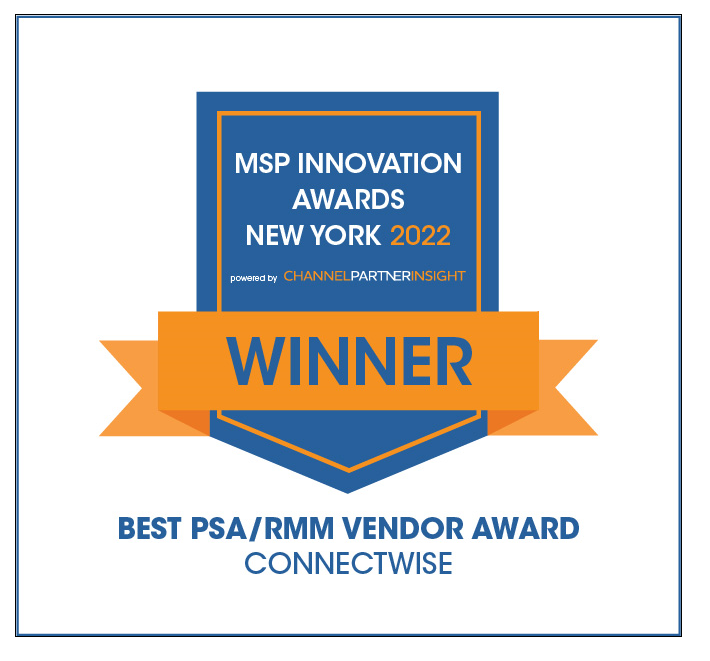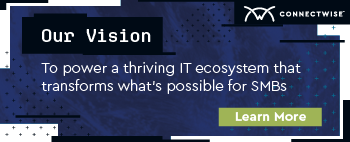How to guide your clients through on-prem to cloud migration
Managed service providers (MSPs) are constantly looking for ways to improve the efficiency of their clients’ systems while keeping costs low to ensure maximum profitability. According to a study conducted by Markets and Markets, the adoption of cloud technology will grow at a compound annual growth rate (CAGR) of 17.9% until 2027. As such, cloud migration support is a valuable and strategic offering for MSPs looking to position themselves for long-term, sustainable growth.
Cloud-based data solutions provide businesses with far greater growth opportunities than on-prem systems by offering increased flexibility, scalability, and digital security over their most crucial business asset—their data. Historically, enterprise companies have been the leaders in cloud migration, but due to advances in affordability and accessibility, small and mid-size businesses are beginning to make the move as well.
While the benefits of cloud migration are significant, there are several key challenges and technical complexities to consider when developing an on-prem to cloud migration project plan. Cloud infrastructure can open businesses up to a myriad of security concerns including data breaches and cyberattacks. Without deliberate planning, execution, optimization, and ongoing proactive maintenance, your client’s data could be compromised.
We’ve put together this guide to help your MSP effectively support your clients in making the move from on-prem to cloud infrastructure.
What is cloud migration?
Cloud migration involves transferring your client’s digital assets and resources from a physical on-premises server to the cloud. For many businesses, migrating to the cloud is a step toward digital transformation and future-proofing their IT infrastructure.
There are several different types of cloud migrations, each with key benefits and trade-offs. MSPs should be familiar with all options to help clients navigate this complex process while minimizing security risks. Some of the most common migration types include:
- Lift and shift: A lift and shift cloud migration involves “shifting” an application from its on-prem host to a cloud-based service provider. These types of migrations simply take what already exists and host it on the cloud. Lift and shift migrations typically work best for customers with limited cloud experience or those that do not require many additional apps.
- Rearchitecting: The most labor-intensive approach, rearchitecting is often best for businesses prioritizing total-cloud optimization. Rearchitecting involves rebuilding their apps and systems from scratch, typically including both data and schemas, in a cloud-native, optimized way.
- Refactoring: Some changes are required to successfully migrate to the cloud during a refactoring migration, but several key aspects remain the same as they were on-prem. This is easiest to think about as a hybrid between lift and shift and rearchitecting migrations.
When planning a cloud migration, it is important to understand the business objectives behind the migration. These will become an integral part of your on-prem to cloud migration project plan and can help inform which migration strategy is fit for the specific use case.
Security considerations for cloud migration
Shifting to cloud infrastructure can make your client’s systems more efficient, scalable, and flexible. It is also typically more cost-effective than maintaining and growing on-prem solutions.
With that said, there is one consideration that should not be overlooked: security. With a growing need to support cloud-based environments across a variety of client industries, MSPs must implement specific security measures and protocols to protect cloud infrastructure.
Why is this the case? Here are a few notable considerations:
- Data protection: Cloud migration creates a ripe opportunity for unauthorized data access. Encryption and data loss prevention measures are key to make sure nothing is lost or compromised in the transition.
- Network security: Compared to an on-prem location, the cloud is a shared environment. Network security measures like firewalls, VPNs, and intrusion detection systems are key to prevent any unauthorized access post-migration.
- Application security: Cloud applications pose a potential vulnerability vector. It’s essential that your team uses practices like least privilege access and patch management to ensure that applications are secure, while also minimizing the risk of human error.
Mastering cloud migration means providing the expert guidance your clients need and understanding the tools and software required to protect their IT systems long-term. Solutions like remote monitoring and maintenance (RMM) can help MSPs proactively monitor client networks and devices and resolve security incidents from anywhere, anytime.
6 steps for effective cloud migration from on-premises
With many moving parts and small technical details, migrating to the cloud may seem like a daunting task. And this complexity is what prevents many businesses from moving to the cloud in the first place. MSPs have an opportunity to bridge this gap and make the transition to the cloud feel much more attainable for their clients.
Leading cloud providers like AWS and Microsoft Azure provide robust documentation to aid in migrating their specific platforms and services. To complement these resources, we have outlined a six-step process to help MSPs successfully guide clients through an on-prem to cloud migration.
1. Assessment
The first step of a successful cloud migration happens before any changes, adjustments, or implementations are made. To successfully navigate a migration, you must identify the best path to get there. This is accomplished through a cloud readiness assessment, where MSPs and clients work together to review:
- The client’s IT infrastructure and network
- The data, applications, and digital assets to be migrated
- Any dependencies or requirements of said applications set to be migrated
- A prioritized list of workloads to move to the cloud first
- The potential for business downtime during the migration
- Migration timing and duration
In many cases, the assessment phase is the first time client organizations get a full understanding of how their different IT components and processes interact with each other. Ultimately, this step should determine whether a cloud migration is feasible for a given client.
2. Plan
With the assessment completed, the next step is to determine how to address the needs and issues discovered in your findings. Having a thorough on-prem to cloud migration project plan in place is one of the easiest and most effective ways to ensure a migration’s success. This plan provides a clear, actionable outline to help your migration stay on track, as well as identify where you went wrong in case issues or complications arise.
Anticipating and outlining potential challenges or roadblocks prior to the migration can help you proactively bring solutions to the table. For example, the type and quantity of the data you will be migrating can help inform which vulnerabilities or security issues might surface during the migration.
Additionally, it is critical to consider compatibility between the legacy on-prem system and the cloud. If businesses force a migration that is not compatible with the rest of their IT infrastructure, unexpected data loss could occur. When these items are accounted for in advance, a different approach to the migration can be considered.
The final step of the planning phase is to articulate the main business goals. The specifics of this vary from business to business, but they are commonly aimed at improving flexibility, scalability, and security. Quantifying your client’s objectives early in the process will allow you to assess the migration’s success or failure post-implementation.
For more helpful resources to guide you through migration planning, download our cloud migration kit
3. Preparation
While assessment determines whether a cloud migration is a feasible option for a business, preparation validates whether or not the migration plan will work. This entails testing and validating the plan to find any potential issues and address them proactively. Validation tasks may include:
- Data mapping across legacy and cloud apps
- Creating test cases and use scenarios for cloud-based applications
- Performing tests/scenarios specifically with select user groups and collecting results
- Building a contingency plan in case of an outage or infrastructure failure during migration
If you find a critical flaw or issue during the preparation process, this step provides your team the opportunity to modify the plan without any risk or harm done to your client. It’s also important to revisit the earlier assessment to determine how to focus and prioritize testing.
4. Execution
Successful execution ensures a seamless transition between the legacy system on-prem and the cloud system. This requires a deep knowledge of the cloud infrastructure and an understanding of the steps that must be taken to ensure data is not lost, corrupted, or vulnerable to leakage during or after the migration.
It is important to be both deliberate and thoughtful when executing a migration, including having reliable backups and safeguards in place. This rollback plan provides a backup of your client’s data if something goes wrong during the migration. For an in-depth breakdown of how to properly execute an on-prem to cloud migration, download our eBook, A Step-by-Step Guide to Successful Cloud Migration for MSPs.
5. Validation
Conducting a thorough validation of the new cloud-based systems after implementation can help you uncover and resolve any mistakes made during the migration itself. Even the best techs can make mistakes, so it is well worth the time and energy to thoroughly test and validate the success of the migration.
Important tests to conduct at this stage involve system performance, functionality, and security. Resolving issues and making adjustments will only get more difficult once the system is live and active, which is why a thorough evaluation is necessary before considering the project complete.
6. Post-migration support
At this stage, you have fully completed a successful on-prem to cloud migration and optimized it to fit your client’s unique business needs and goals. Now, you can shift your focus toward providing ongoing maintenance and support as your client adapts to their new cloud infrastructure. Common post-migration tasks may include removing redundant systems or adjusting configuration to deliver optimal performance.
It is common for businesses that have operated with on-prem data systems for many years to struggle with the cloud immediately following a migration. This may include the perception of having less access or control over their own data. MSPs can serve as a trusted resource to help clients succeed while learning their new system, while bridging this technology gap with trusted IT software solutions.
With 66% of organizations storing between 21% and 60% of their sensitive data in the cloud, cybersecurity should be at the forefront of your post-migration strategy. Adopting best practices for data security, access control, and compliance can help keep data protected, while implementing solutions like RMM and BCDR software can further assist with the ongoing monitoring and protection of critical data.
Getting the most out of the cloud involves constant optimization, and technology must continue to evolve with changing business needs and security threats.
Solutions to support cloud migration
There is endless opportunity to capitalize on the growing cloud market, and successful MSPs must demonstrate the skills and experience required to guide clients through this complex, and often costly, journey. Mastering the on-prem to cloud migration process is critical for MSPs looking to stay competitive in the changing technology landscape.
Whether your environment is on-prem, cloud-based, or a hybrid, ConnectWise’s Business Management Solutions can help you deliver unmatched IT support and security protection while profitably growing your business. And when looking to optimize your own internal operations, look no further than our cloud service solutions and award-winning PSA software to help keep your MSP operating efficiently and at the forefront of technology.
Learn more about our business management solutions by watching an on-demand demo today.


